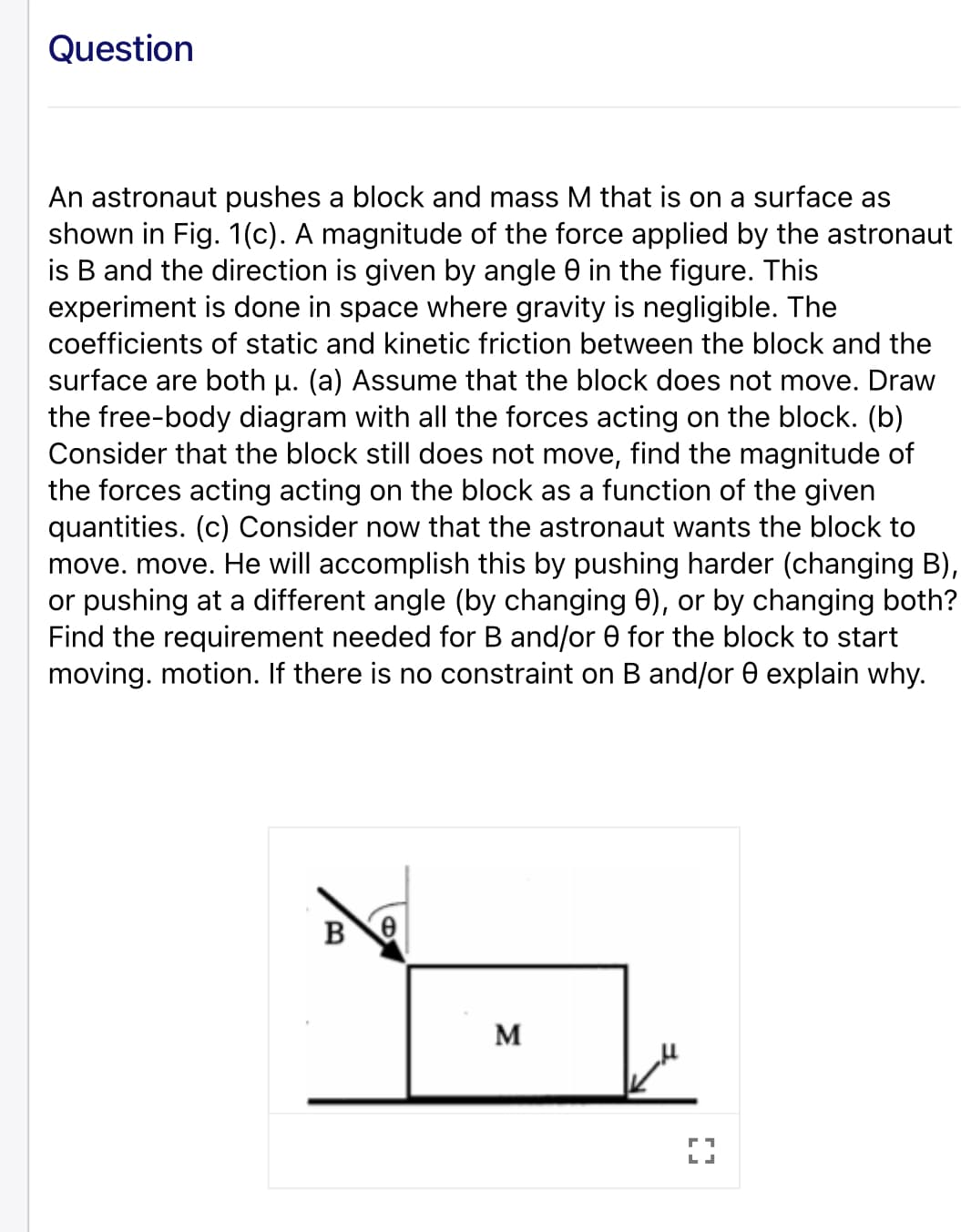An astronaut pushes a block and mass M that is on a surface as shown in Fig. 1(c). A magnitude of the force applied by the astronaut is B and the direction is given by angle 0 in the figure. This experiment is done in space where gravity is negligible. The coefficients of static and kinetic friction between the block and the surface are both u. (a) Assume that the block does not move. Draw the free-body diagram with all the forces acting on the block. (b)
An astronaut pushes a block and mass M that is on a surface as shown in Fig. 1(c). A magnitude of the force applied by the astronaut is B and the direction is given by angle 0 in the figure. This experiment is done in space where gravity is negligible. The coefficients of static and kinetic friction between the block and the surface are both u. (a) Assume that the block does not move. Draw the free-body diagram with all the forces acting on the block. (b)
University Physics Volume 1
18th Edition
ISBN:9781938168277
Author:William Moebs, Samuel J. Ling, Jeff Sanny
Publisher:William Moebs, Samuel J. Ling, Jeff Sanny
Chapter6: Applications Of Newton's Laws
Section: Chapter Questions
Problem 58P: Calculate the maximum acceleration of a car that is heading up a 4.00slope (one that makes an angle...
Related questions
Question
Hi please solve this question

Transcribed Image Text:Question
An astronaut pushes a block and mass M that is on a surface as
shown in Fig. 1(c). A magnitude of the force applied by the astronaut
is B and the direction is given by angle 0 in the figure. This
experiment is done in space where gravity is negligible. The
coefficients of static and kinetic friction between the block and the
surface are both u. (a) Assume that the block does not move. Draw
the free-body diagram with all the forces acting on the block. (b)
Consider that the block still does not move, find the magnitude of
the forces acting acting on the block as a function of the given
quantities. (c) Consider now that the astronaut wants the block to
move. move. He will accomplish this by pushing harder (changing B),
or pushing at a different angle (by changing 0), or by changing both?
Find the requirement needed for B and/or 0 for the block to start
moving. motion. If there is no constraint on B and/or 0 explain why.
M
Expert Solution
This question has been solved!
Explore an expertly crafted, step-by-step solution for a thorough understanding of key concepts.
Step by step
Solved in 3 steps with 1 images

Knowledge Booster
Learn more about
Need a deep-dive on the concept behind this application? Look no further. Learn more about this topic, physics and related others by exploring similar questions and additional content below.Recommended textbooks for you

University Physics Volume 1
Physics
ISBN:
9781938168277
Author:
William Moebs, Samuel J. Ling, Jeff Sanny
Publisher:
OpenStax - Rice University

University Physics Volume 1
Physics
ISBN:
9781938168277
Author:
William Moebs, Samuel J. Ling, Jeff Sanny
Publisher:
OpenStax - Rice University